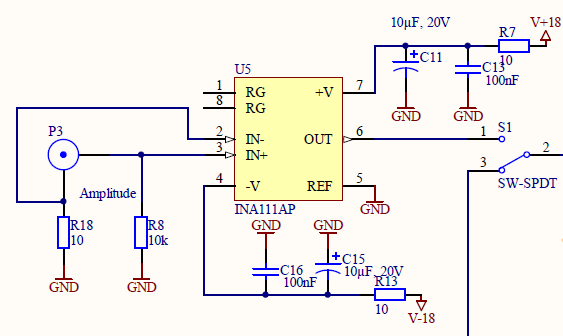I've inherited an RF amplifier design (50MHz-1GHz) that uses an instrumentation amplifier to accept a DC voltage control signal. Neither myself nor my PI can explain why R8 and R18 are present. My guesses follow.

R8: Reading the spec sheet of related amplifiers, they say that the input bias current must have a DC path to ground for the amplifier to not float / saturate. This doesn't seem to be the case here: the input is just a coax cable with a DC control voltage on it. I think I'd need the 10k if I had a thermocouple, or transformer. But here it seems unnecessary, and makes the input impedance much lower.
R18: Why would you want your opamp to be referenced slightly above ground? Is this to compensate somehow for the offset voltage (which is 500uV max)?
I'm tempted to remove both to save PCB space, but this is a working design so I'm hesitant to make a change based on ignorance.
Thanks!
